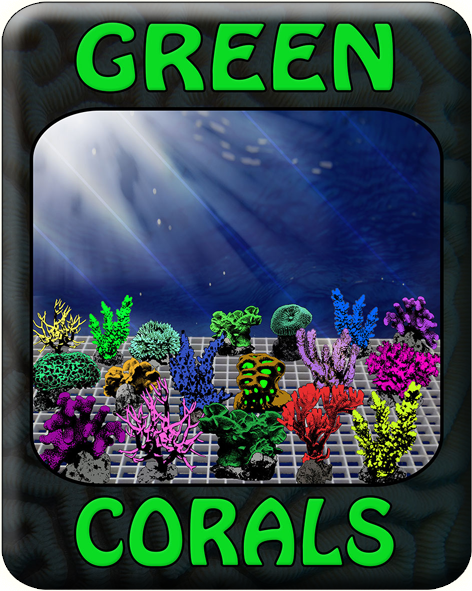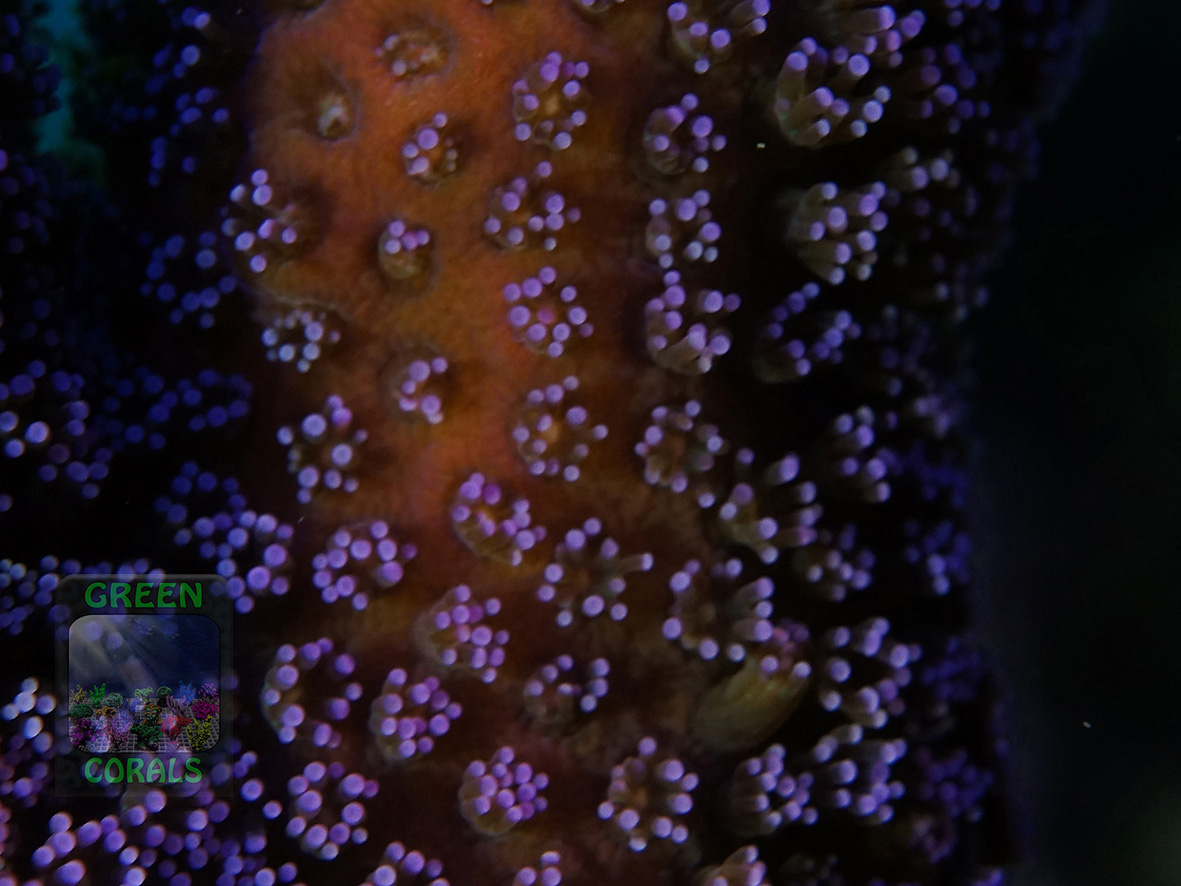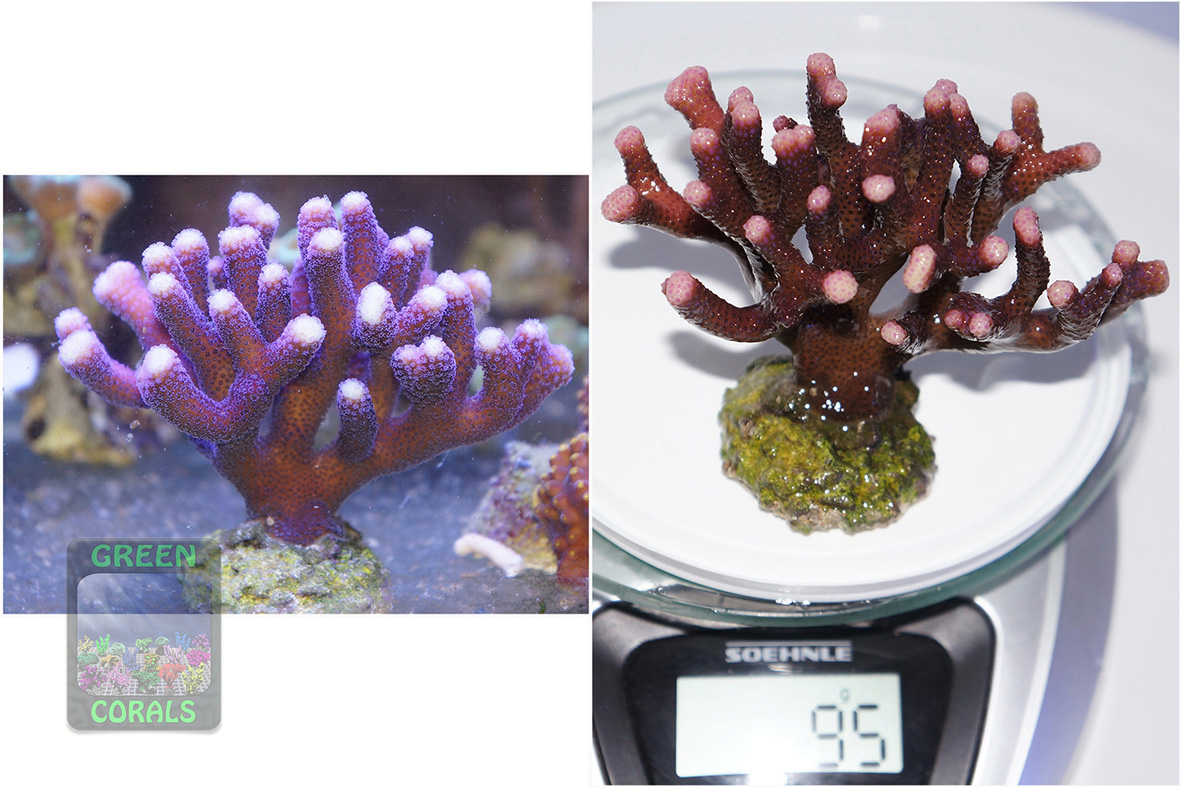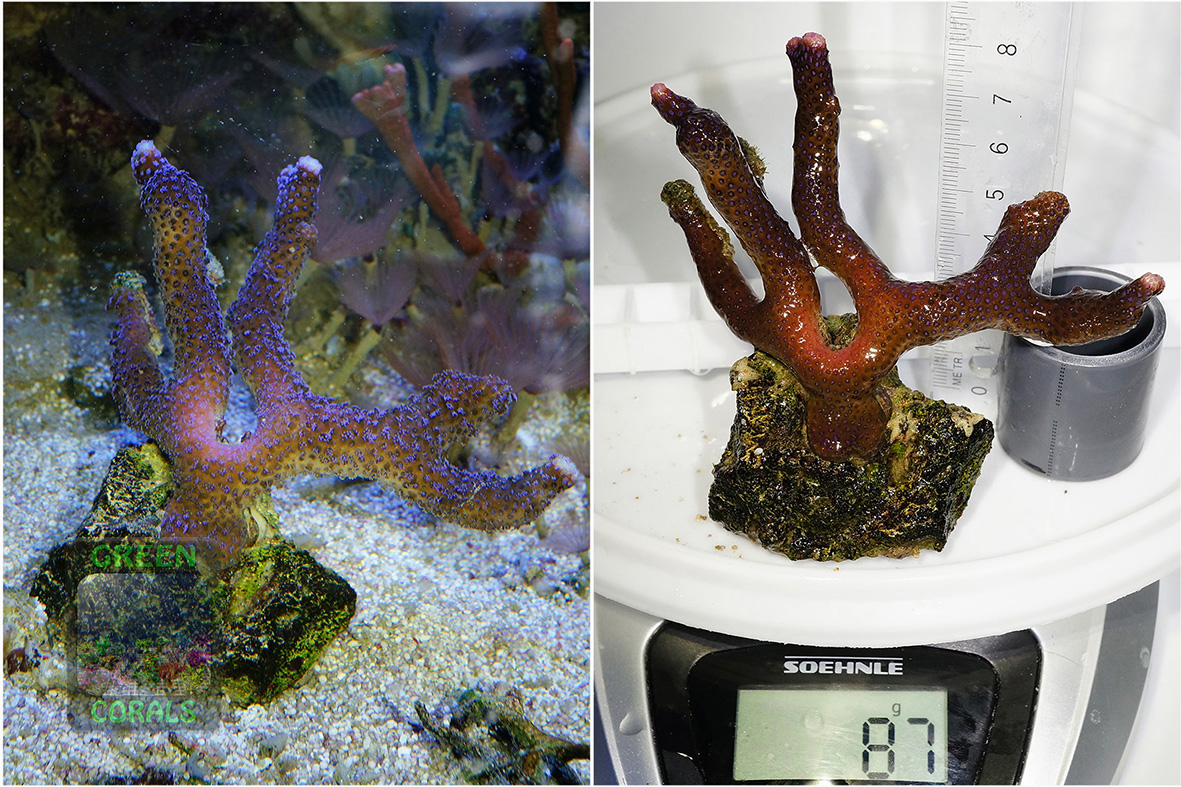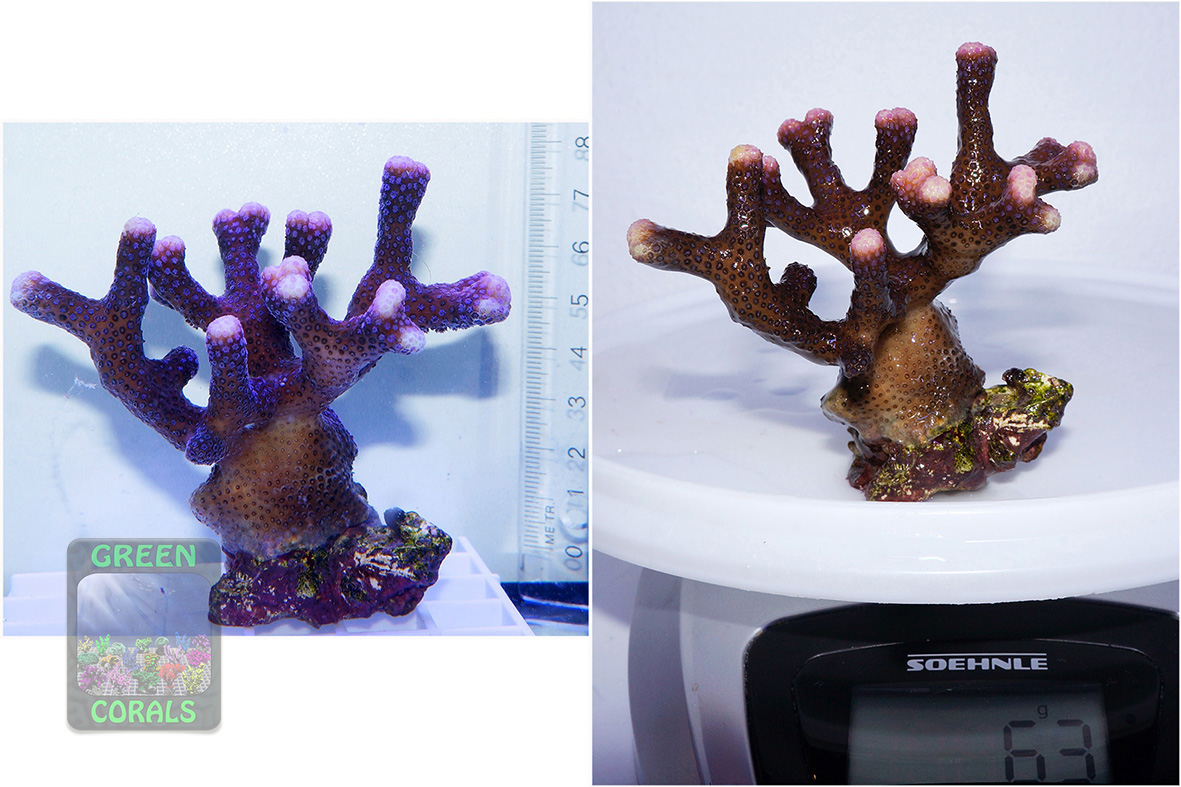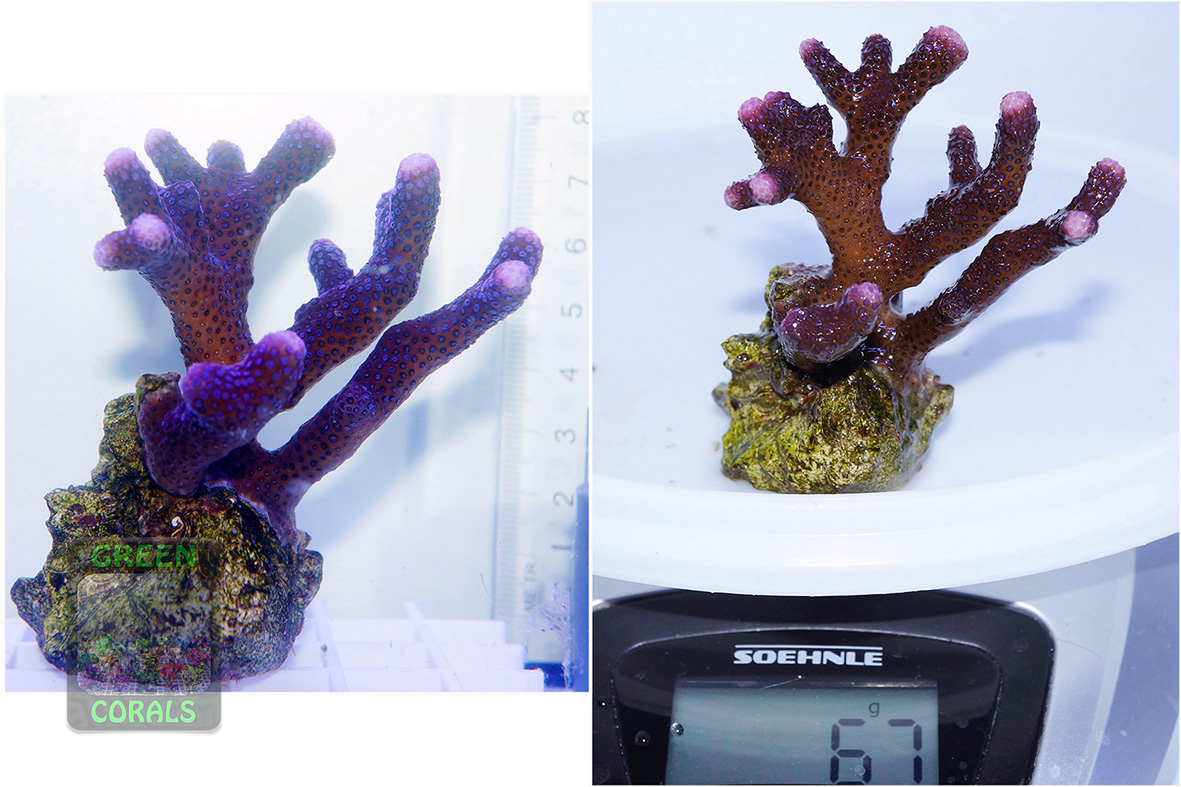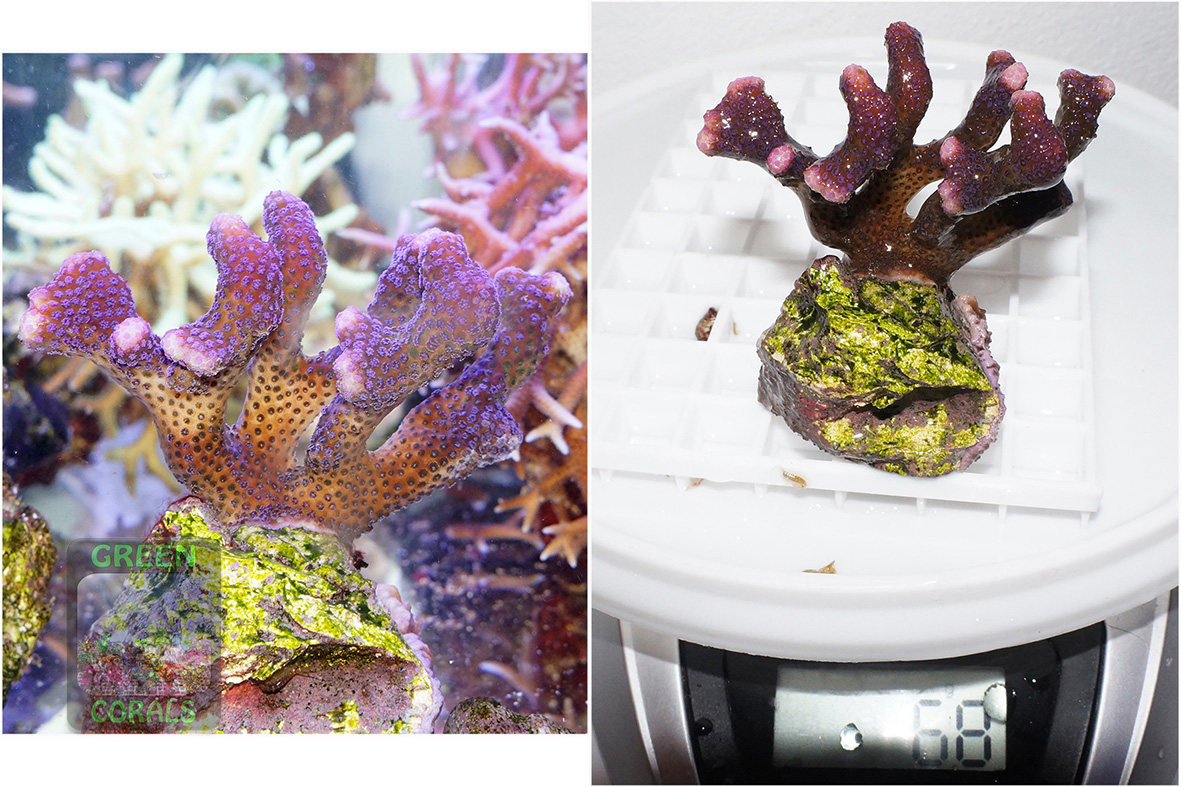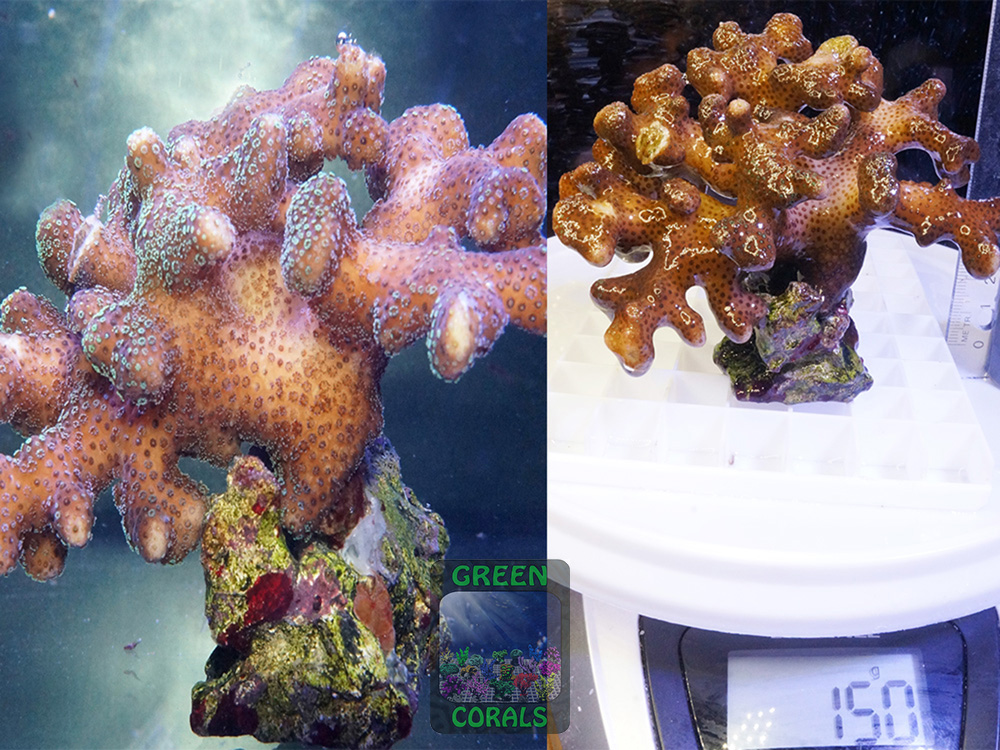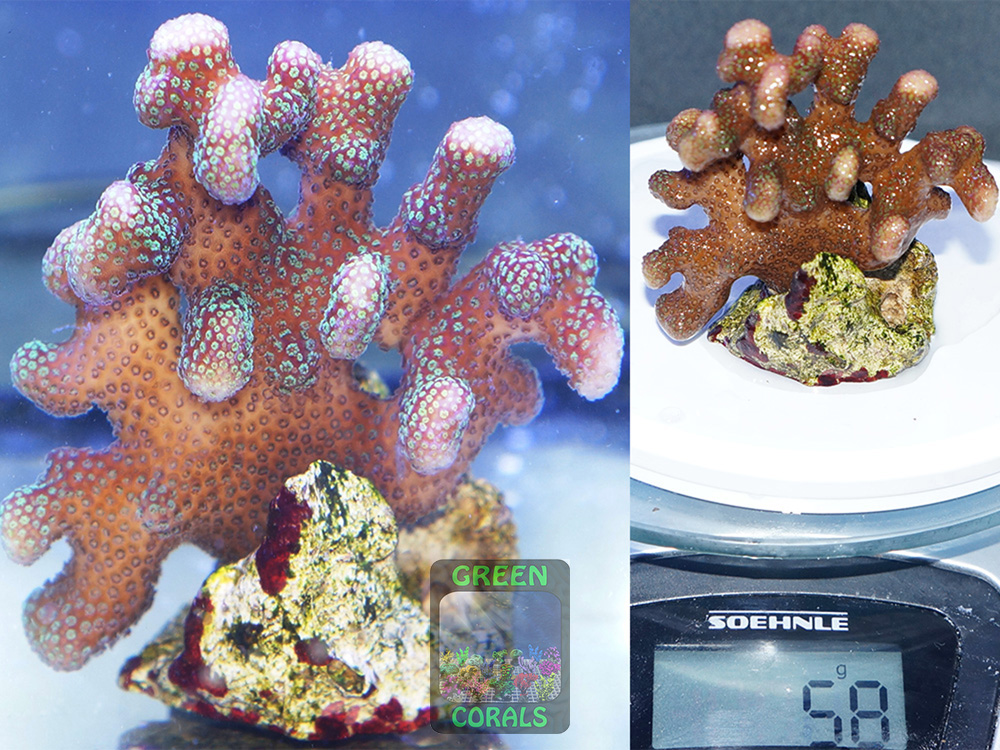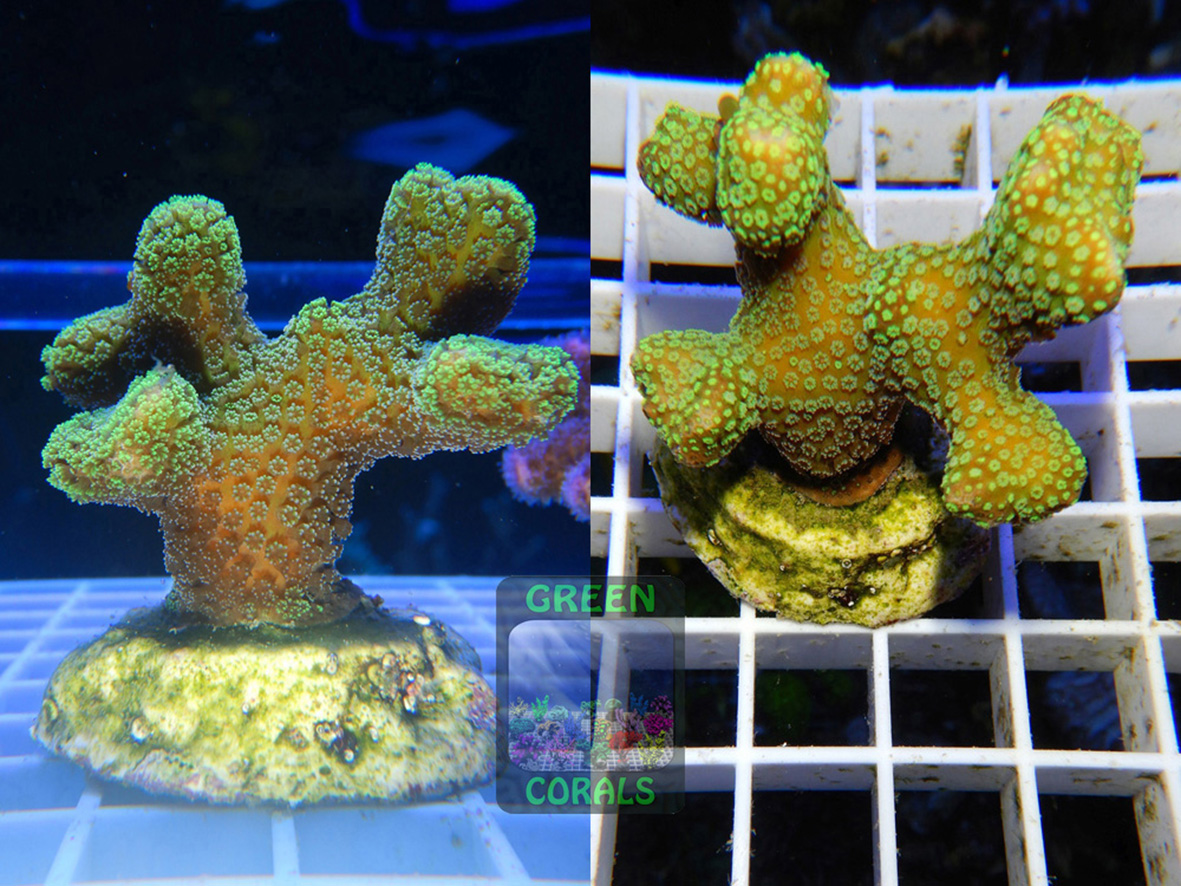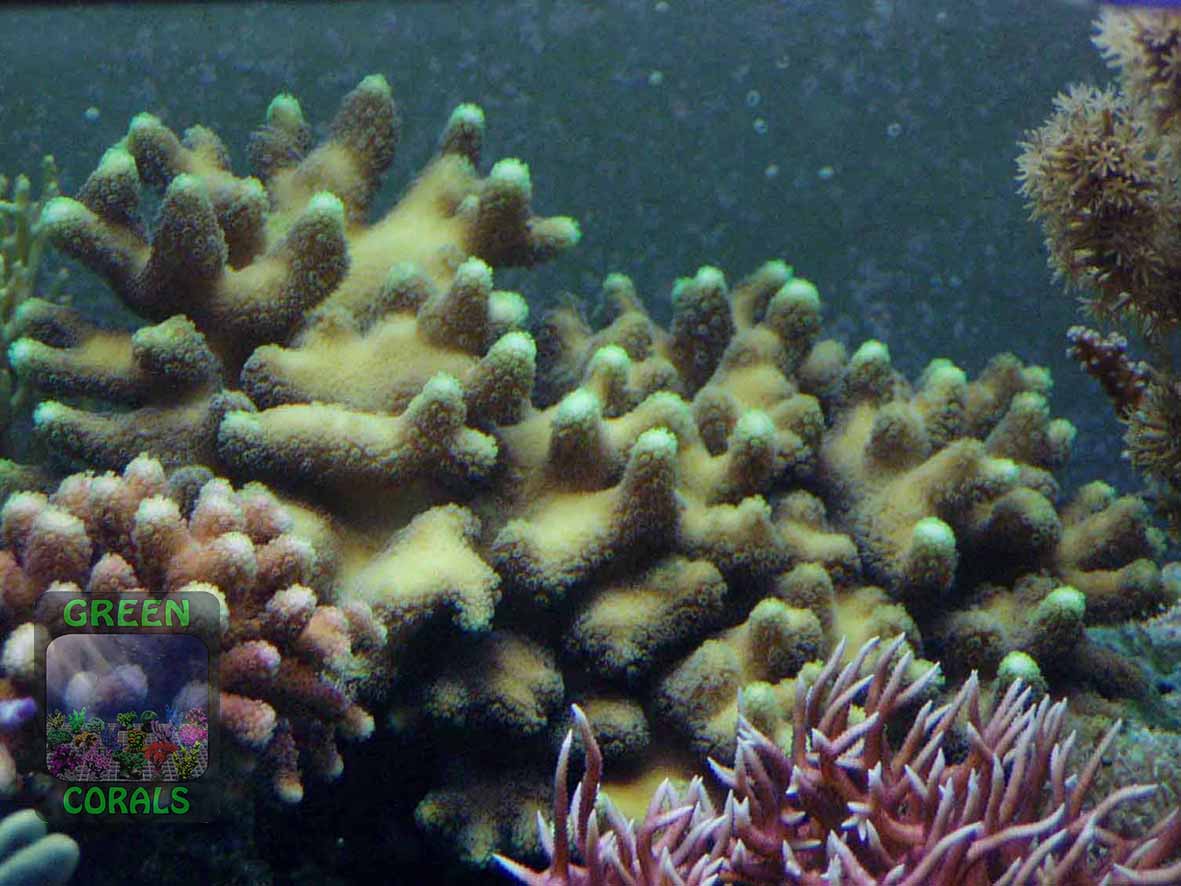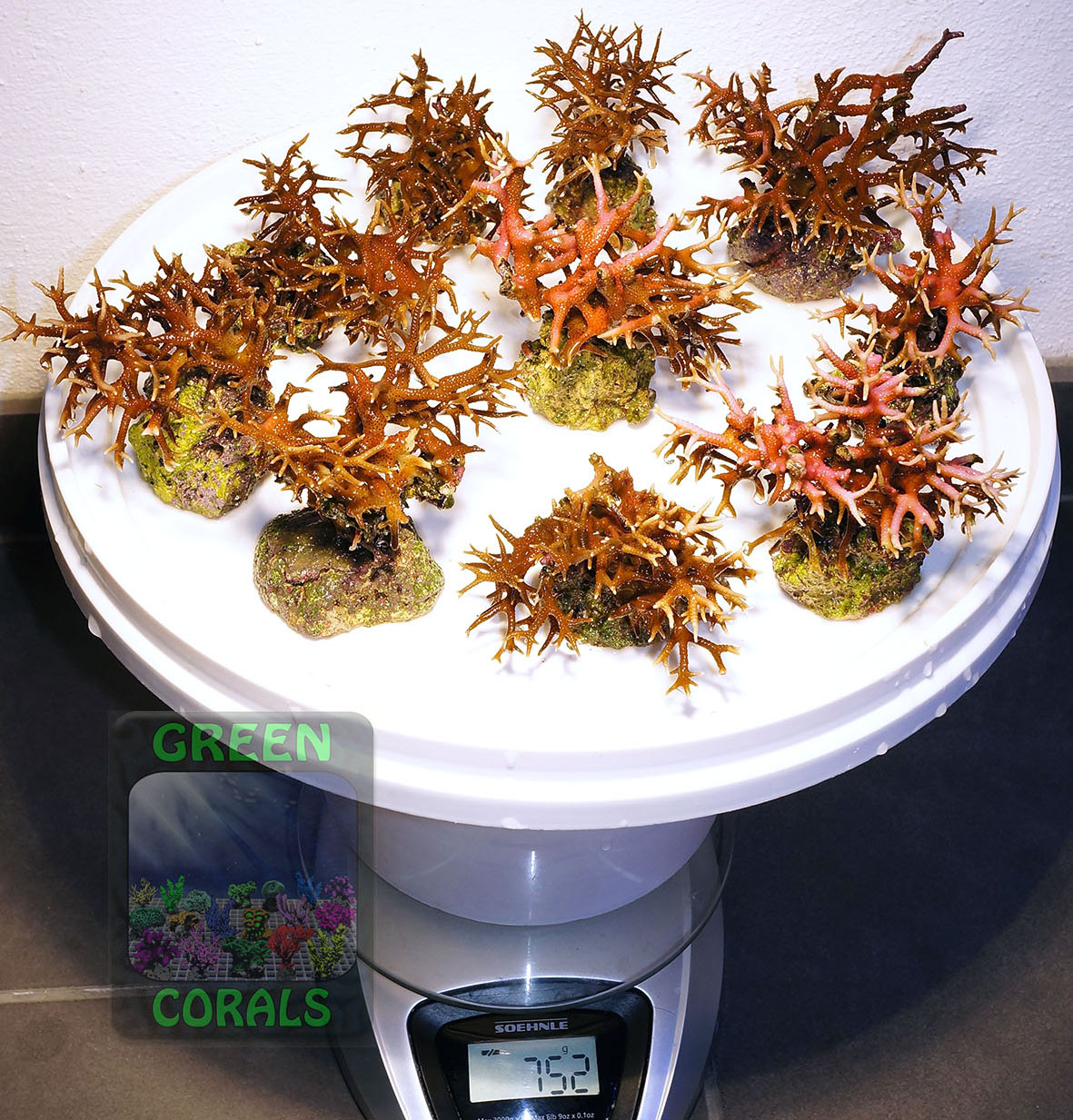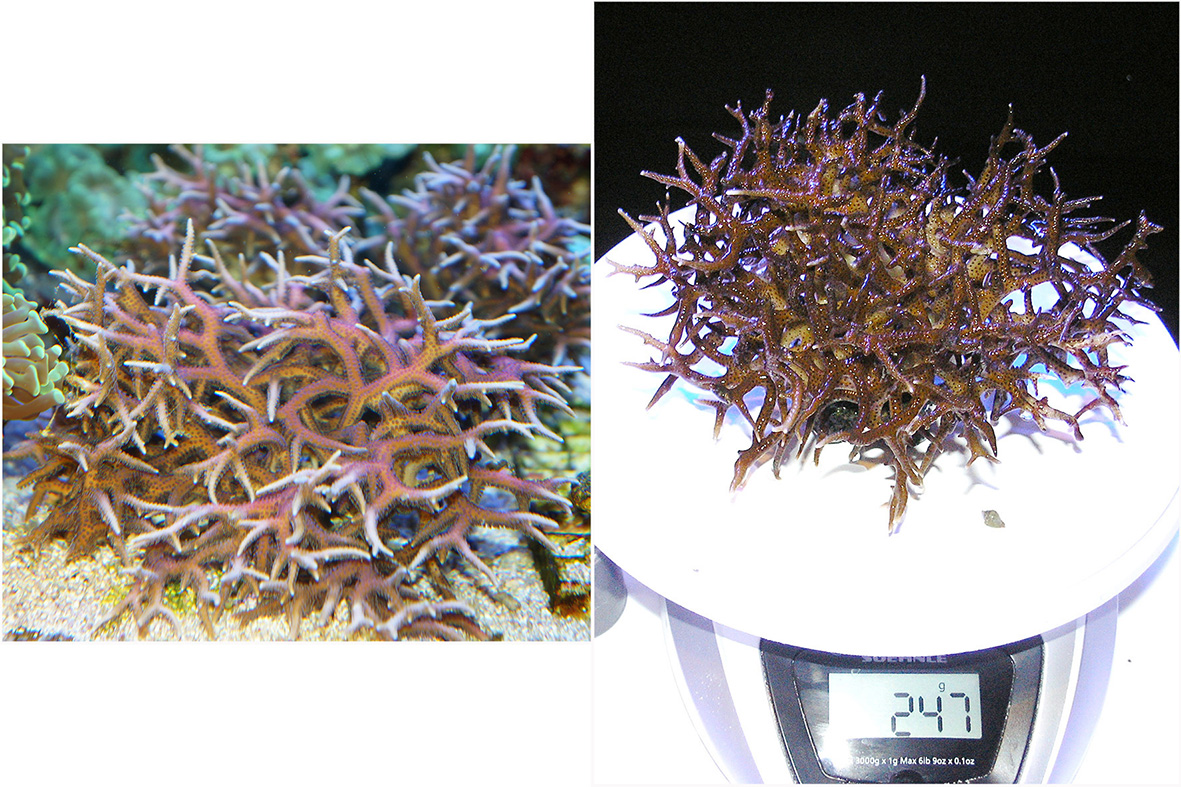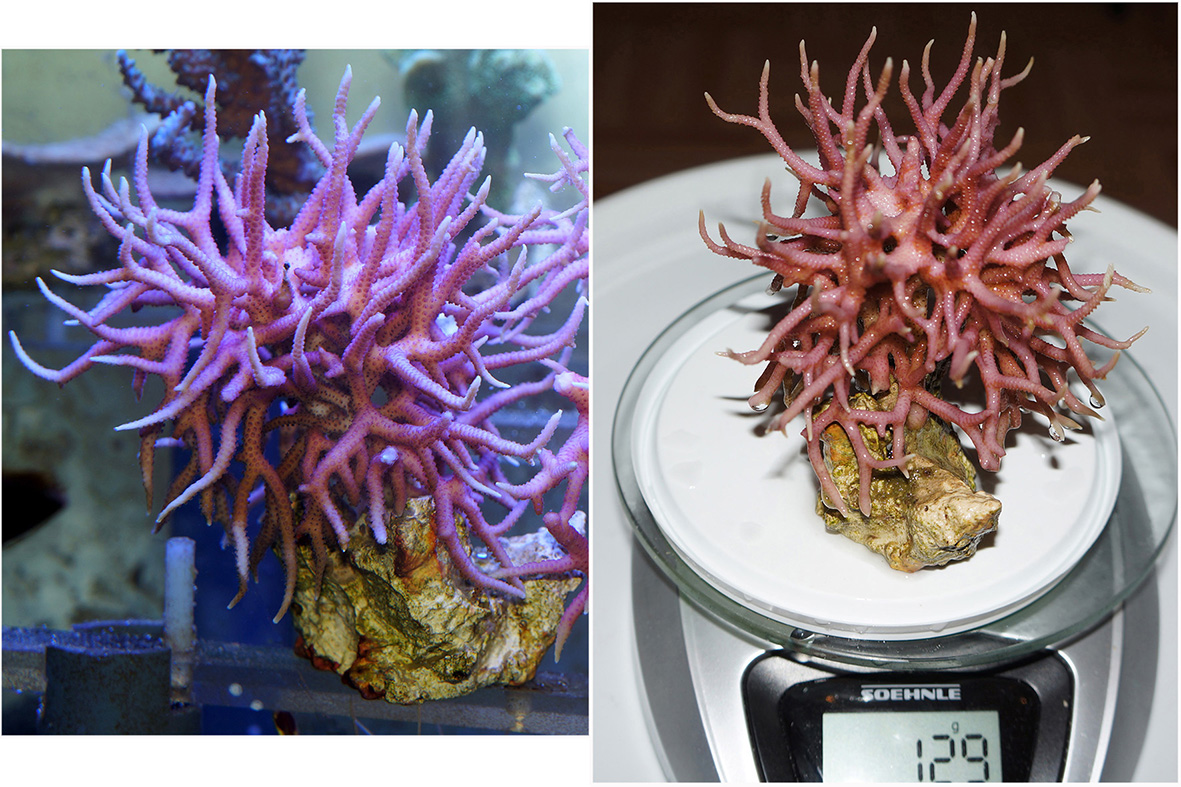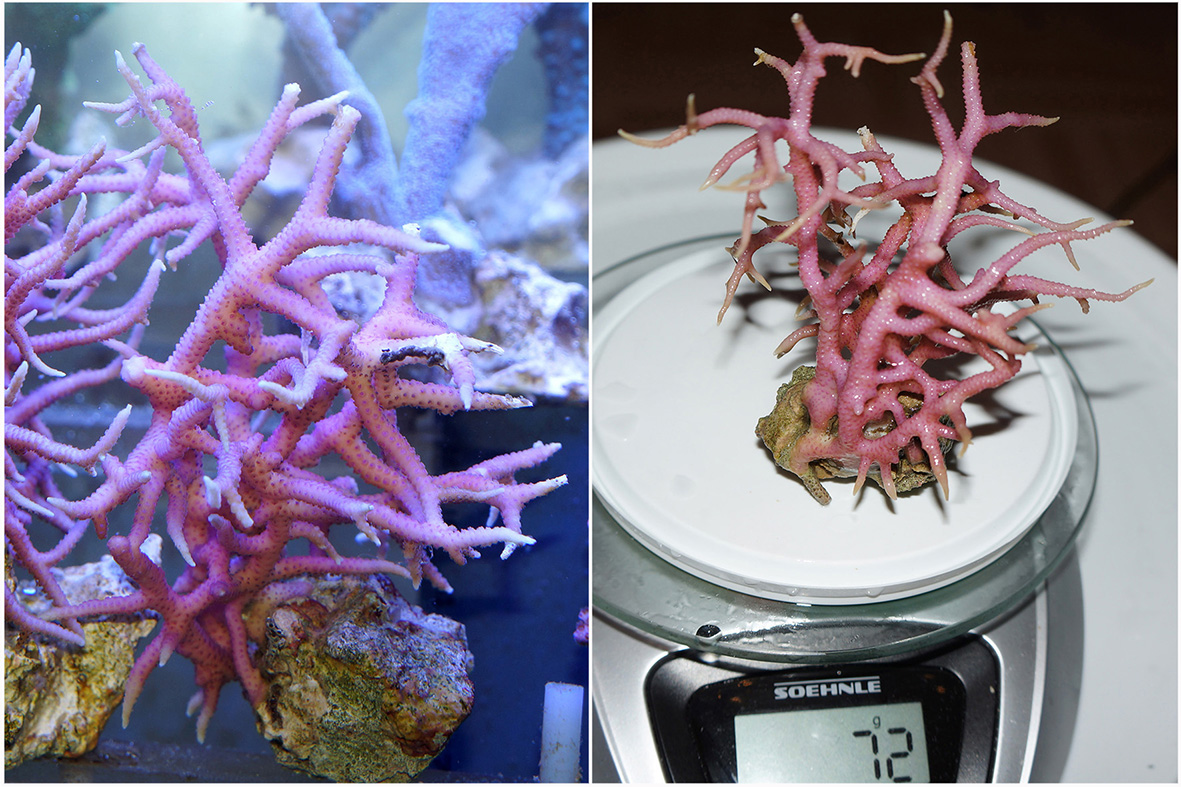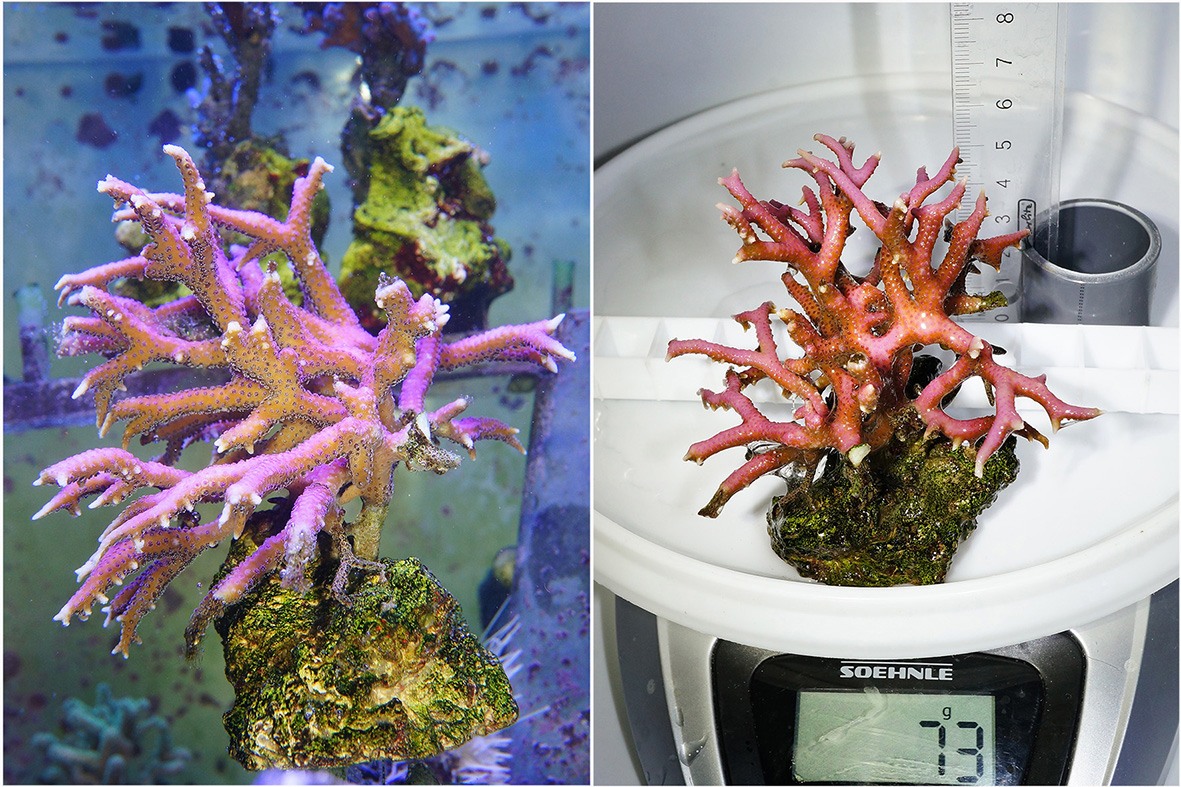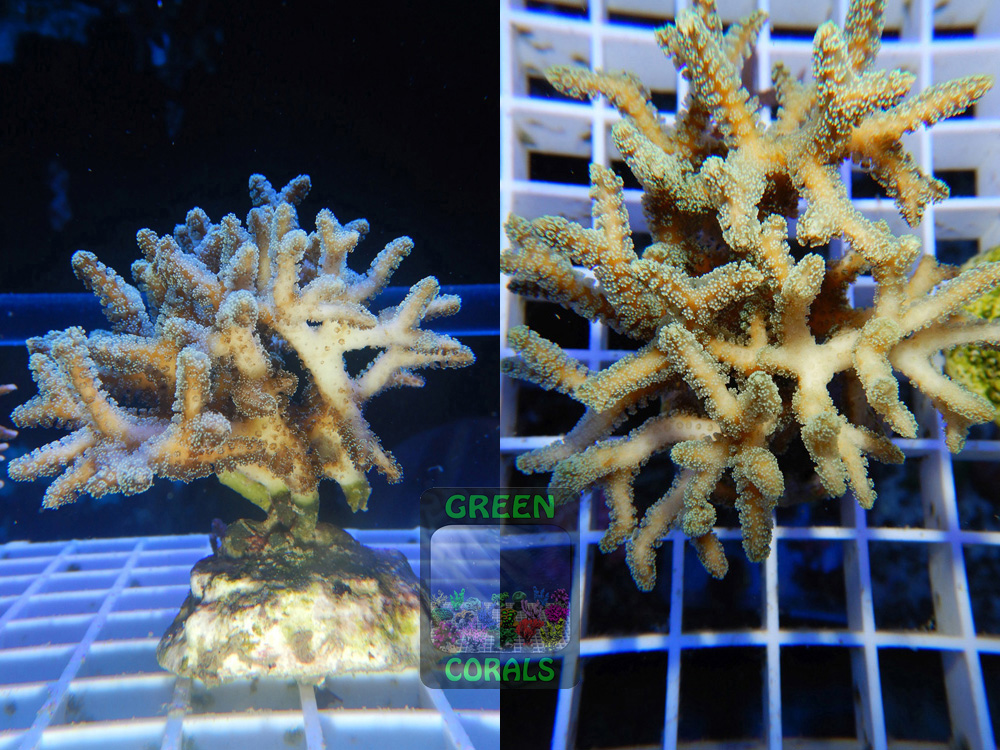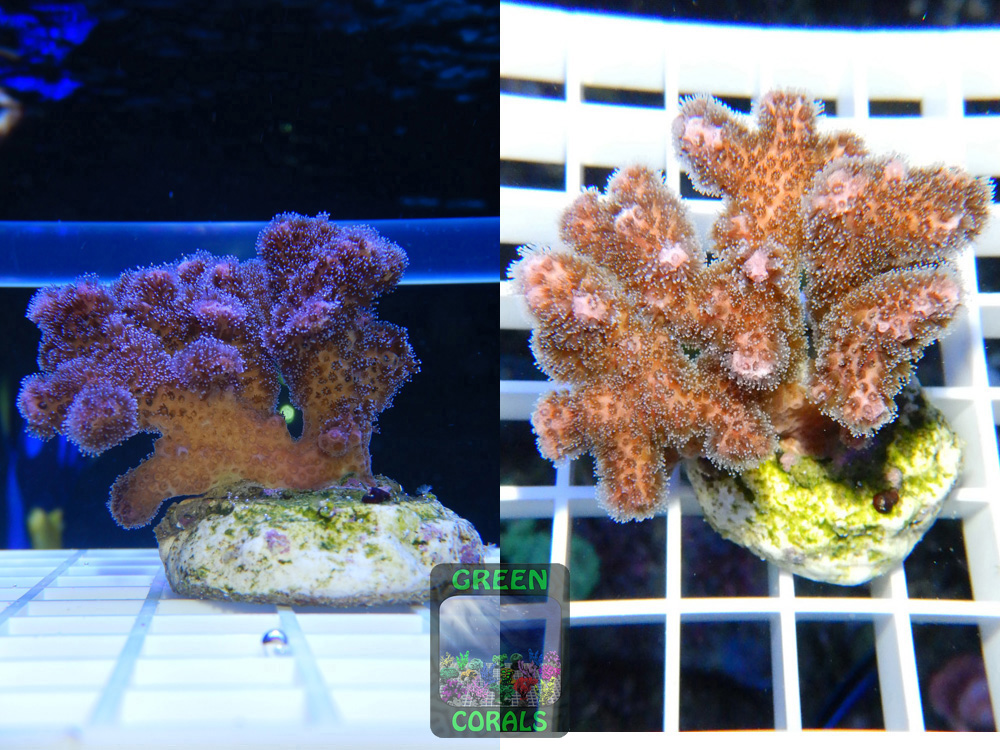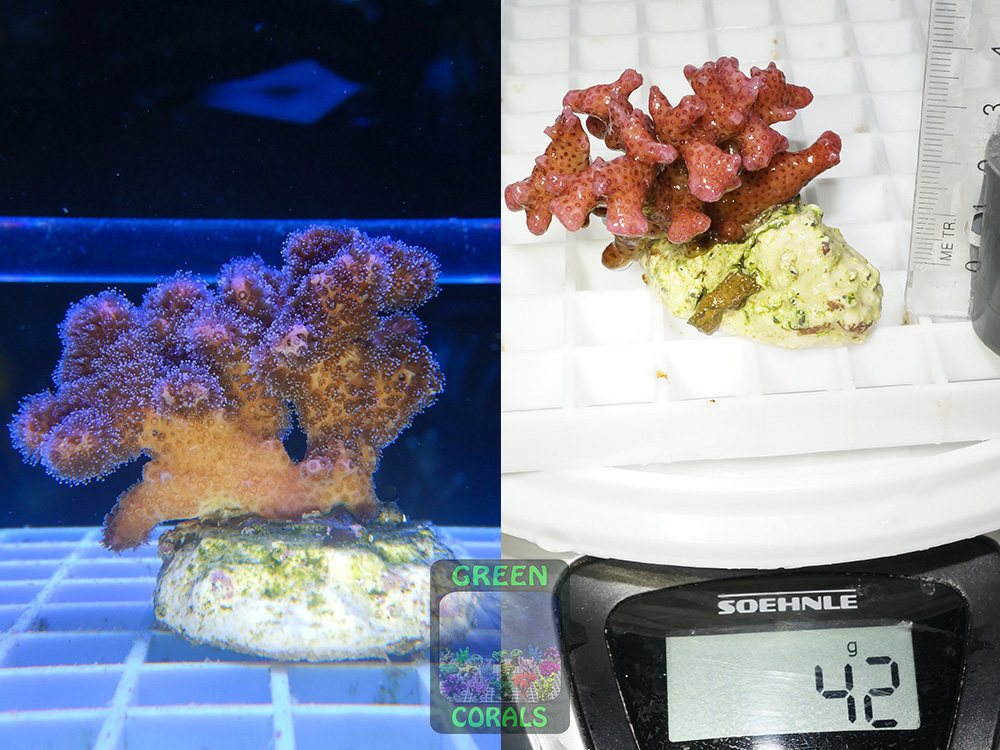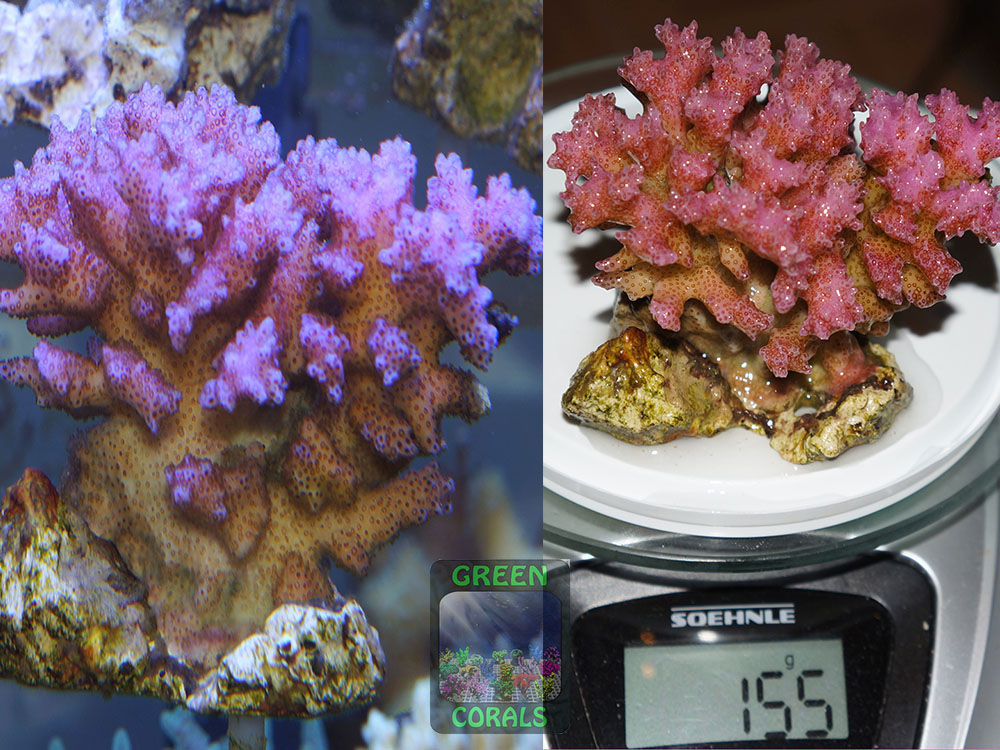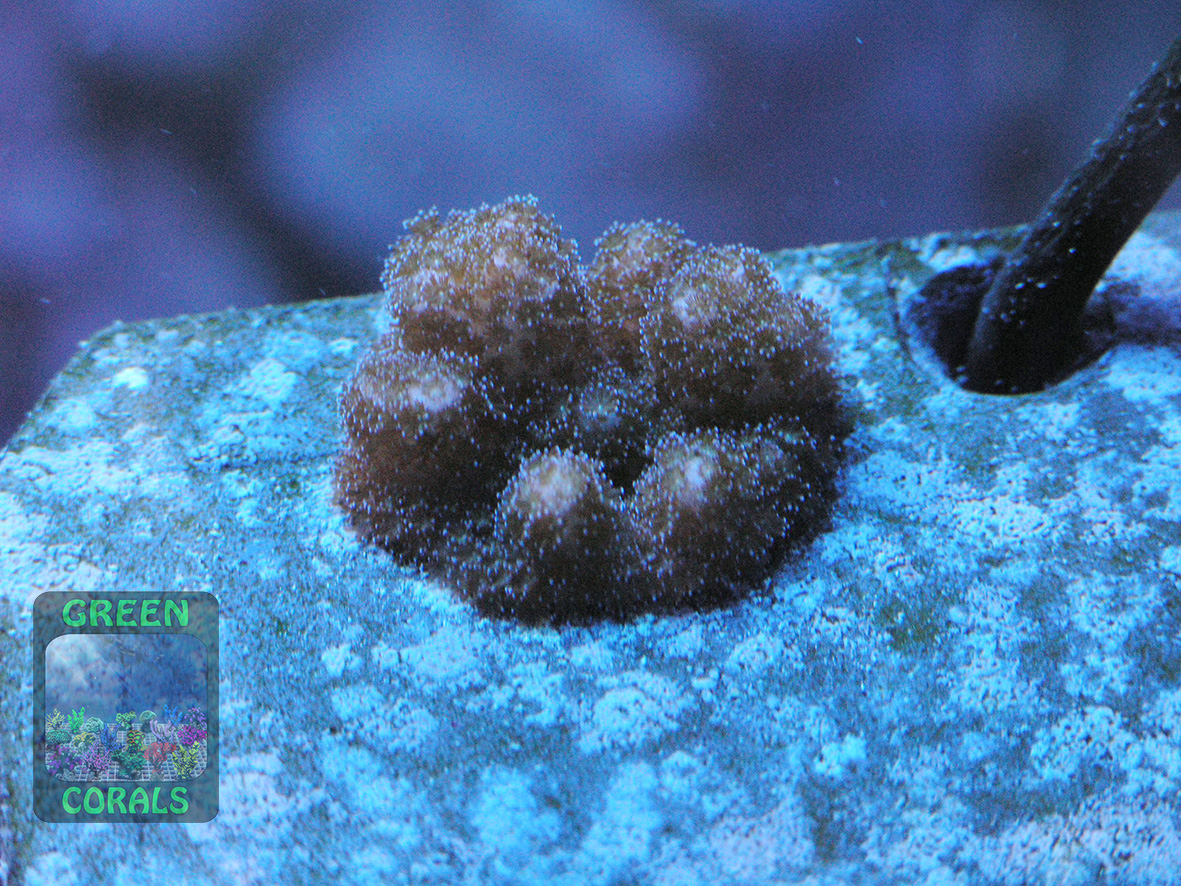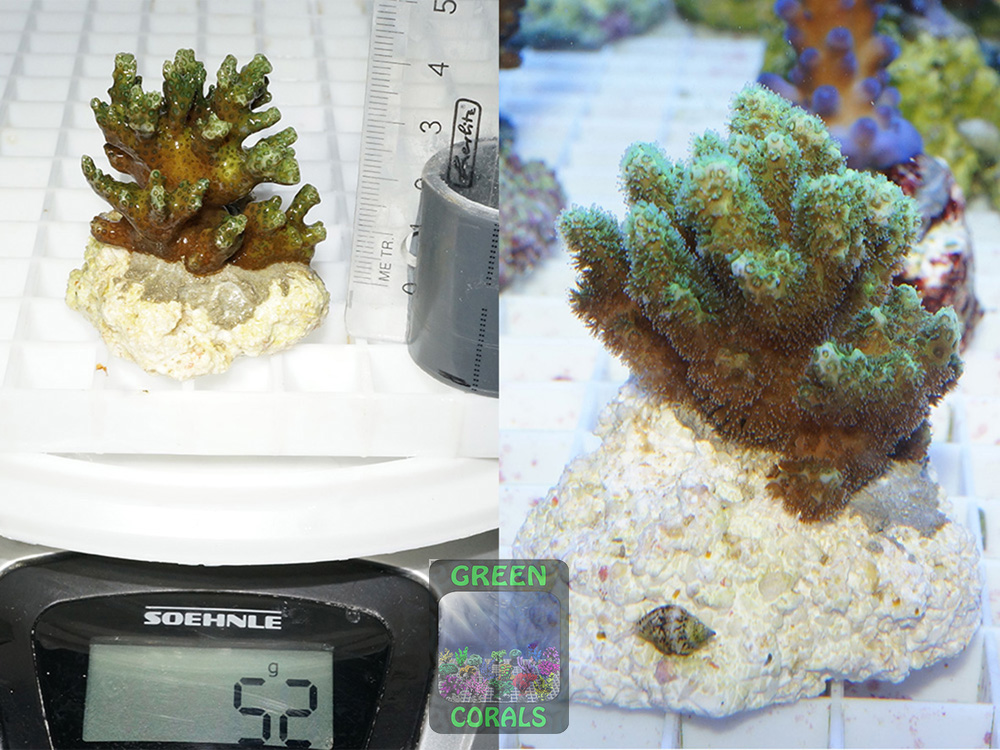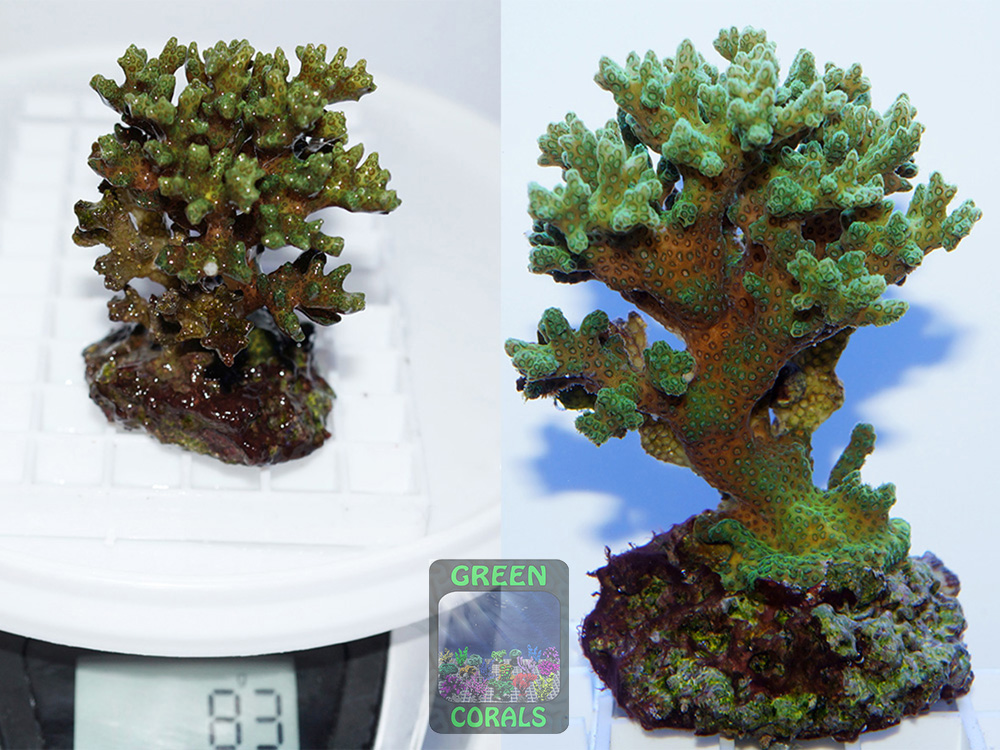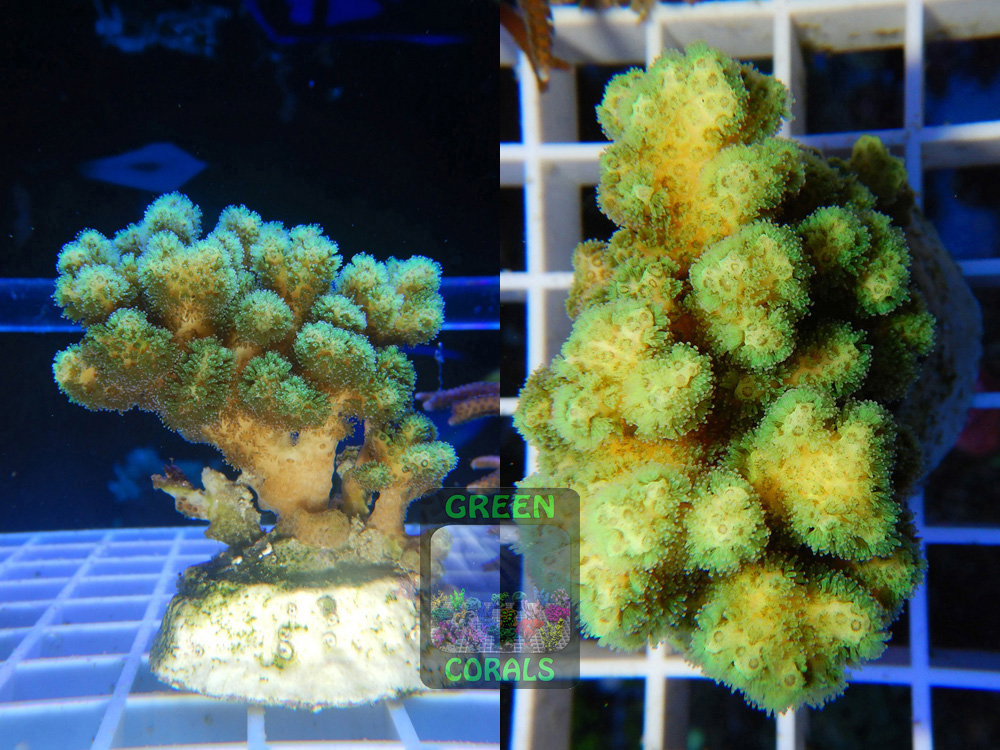Stylophora
The genus Styophora is widespread in the Indo-Pacific, geographically from the Red Sea to Polynesia, and within the different sub-habitats of the reefs: it occurs in absolutely shallow water near the beach and on the reef flat, where it is often left dry for several hours at low tide, exposed to the blazing tropical sun, and it occurs right down to the lower reef slope. It is also found inside the lagoons and is one of the few corals to be found next to the mangroves.
Stylophora has a bushy growth form, with finger-thick, branched branches with blunt or slightly flattened ends. The corallites are small, about 1 mm, and evenly distributed over the surface. Characteristic of the genus are the “hoods” or “caps” on the edge of the corallites, which give the surface a rough, grainy appearance. Their colouration and growth form vary greatly depending on different environmental parameters such as light, current and sedimentation. It is pretty robust in the aquarium, tolerating low to high nutrient levels and low to very high light intensities.
Stylophora is an absolute must for any reef aquarium, we have two species and colours available: Stylophora subseriata `lila´ and Stylophora pistillata ‘cream.
Stylophora subseriata `lila´
The purple ‘milka coral’ is wide spread in marine aquariums because of its attractive colouration and good fragmenting properties. Stylophora subseriata has thinner and more elongated branches than the cream coloured Stylophora pistillata. The branches rise upwards like long columns from the centre of the colony.
It can grow into colonies of at least half a metre in size (as we have) and is very easy to keep, making it a good coral for beginners.
from 34,50 € in our SHOP
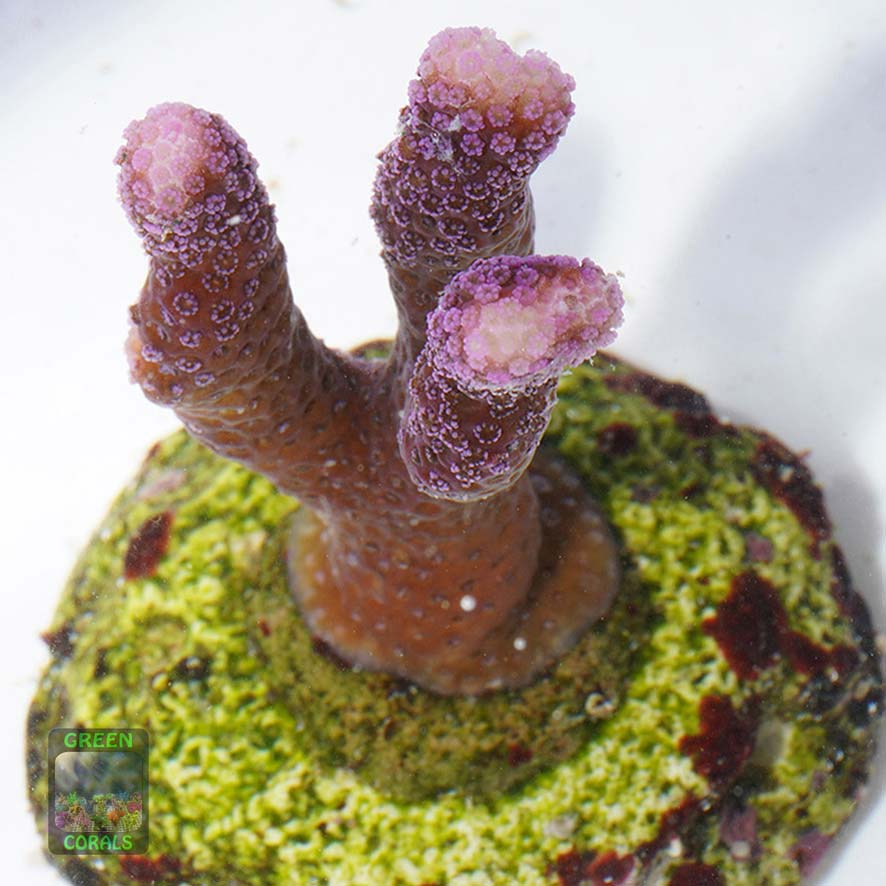
Stylophora pistillata `creme´
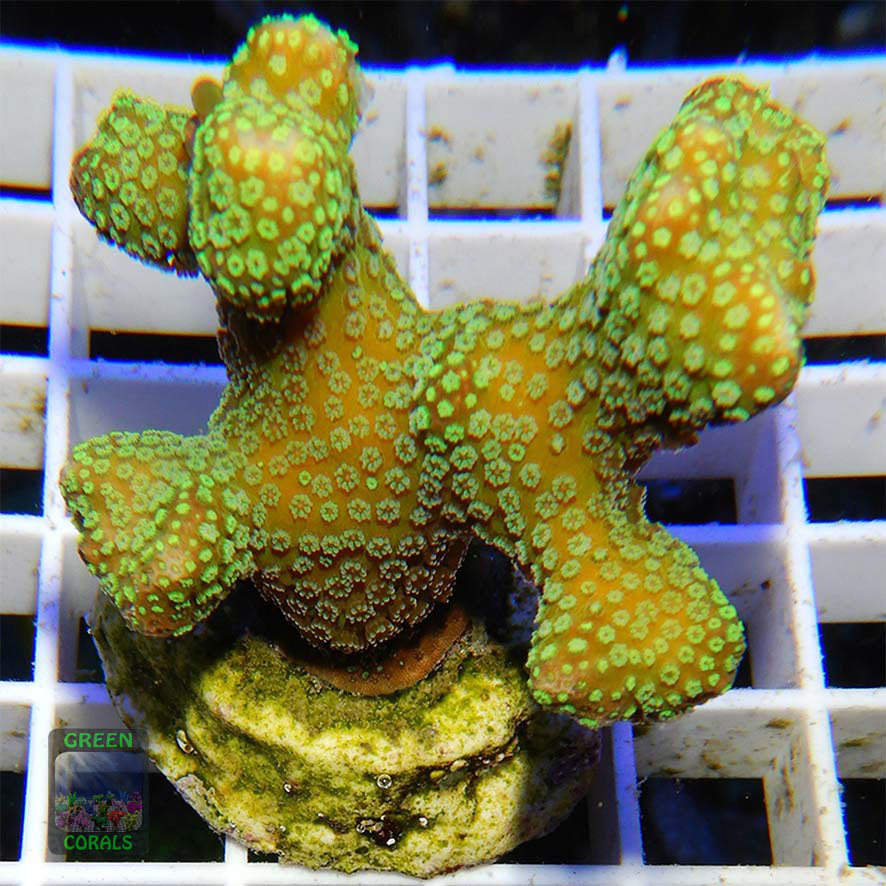
The “cream-colored” variant of Stylophora pistillata is quite variable in coloration depending on the light intensity: Under low light intensity it is quite dark, coloured into brown – under high light intensity it is bright cream-orange-yellow, with neon-green polyps. The reason for this is that at lower light intensity it needs more zooxanthellae to meet its nutrient requirements, at high light it can cope with a lower zooxanthellae density – and the coral’s own color pigments come into play more.
Its growth form is much more massive than S. subseriata, an old mother colony might be better described as “submassive” rather than “bushy”. The ends of the branches are also thicker and bulbous.
from 24,50 € in our SHOP
Seriatopora
The genus Seriatopora comprises six described species, of which the needle coral Seriatopora hystrix is one of the most popular and widespread “standard” corals in reef aquariums. Needle corals are robust and fast growing. With their spiky thicket of thin coral branches, they provide shelter for many small creatures. Because of their fast growth, they should be placed on the sides of the aquarium. It is also found in the lagoons and is one of the few corals that can be found at the border next to the mangroves.
Seriatopora hystrix `pink´
The pink needle coral Seriatophora hystrix is a must for any reef aquarium.
It is robust and not sensitive to water parameters and nutrients. Unlike S. caliendrum, the small polyps are arranged in parallel rows on the slender branches.
Under high light intensities and strong currents it grows quite compactly – in low light it tends to spread out.
The polyps of Seriatopora hystrix are not open during the day. Its branches are thinner than those of other Seriatopora species and taper to a point, giving it the name needle coral.
It also tolerates lower light intensities and, due to its rapid growth, is best placed on the sides of the aquarium.
.
from 19,00 € in our SHOP
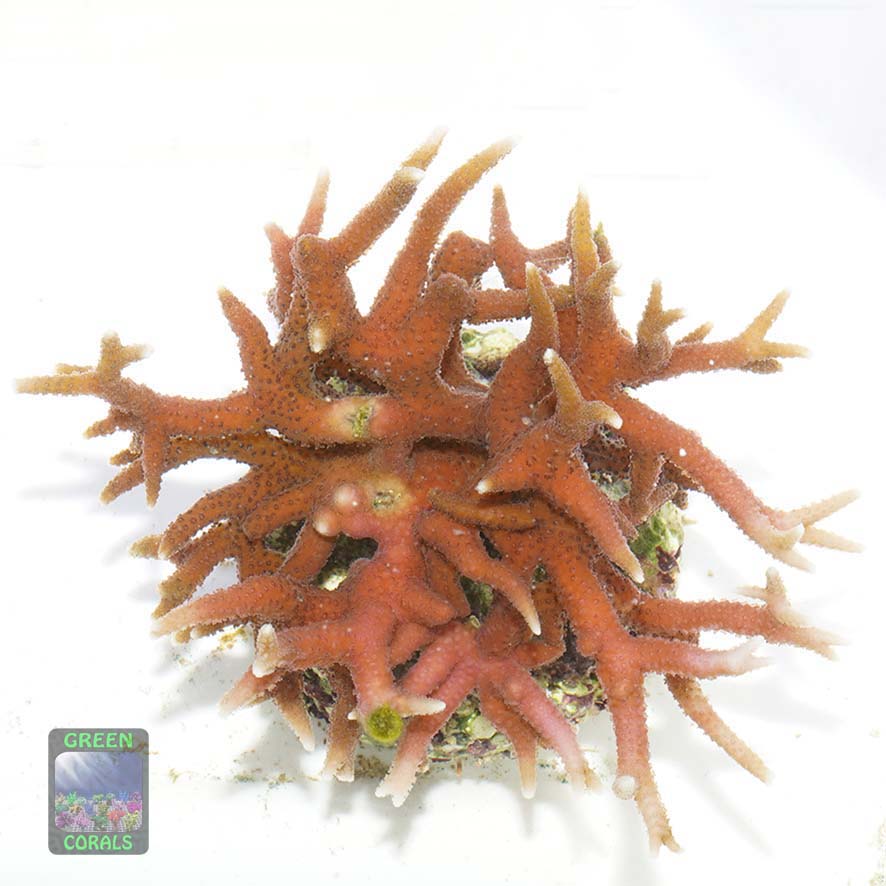
Seriatopora hystrix `gelb´
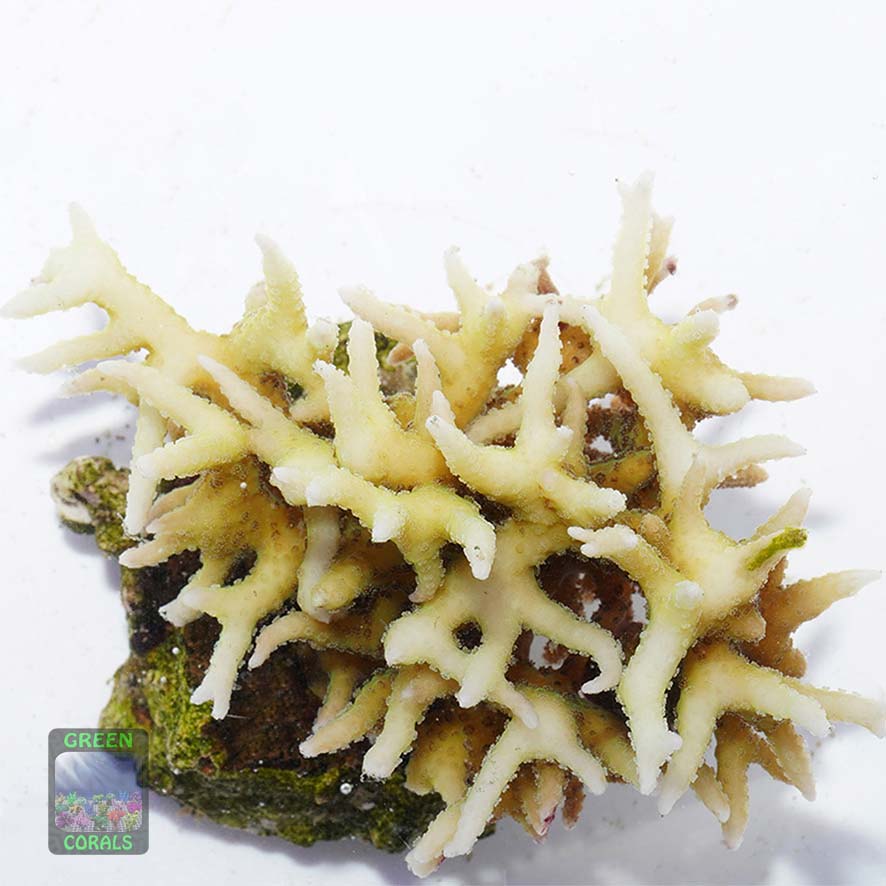
This is a different colour form of S. hystrix. Incidentally, all S. hystrix in the Red Sea are yellowish, almost white, so you might think you are looking at a dead coral. The pink form is only found in the Indo-Pacific.
from 19,00 € in our SHOP
Seriatopora caliendrum `gelb´
The yellow Seriatopora caliendrum is almost as fast growing as the related S. hystrix. Unlike the latter, its branch tips are somewhat blunt and the polyps are not exactly arranged in parallel rows. In Seriatopora caliendrum the polyps are usually open during the day, giving it a “fluffy” appearance.
It also grows into a spiny thicket where the lower and inner shaded areas are dead – many tiny creatures find shelter between these thin coral branches.
from 29,00 € in our SHOP
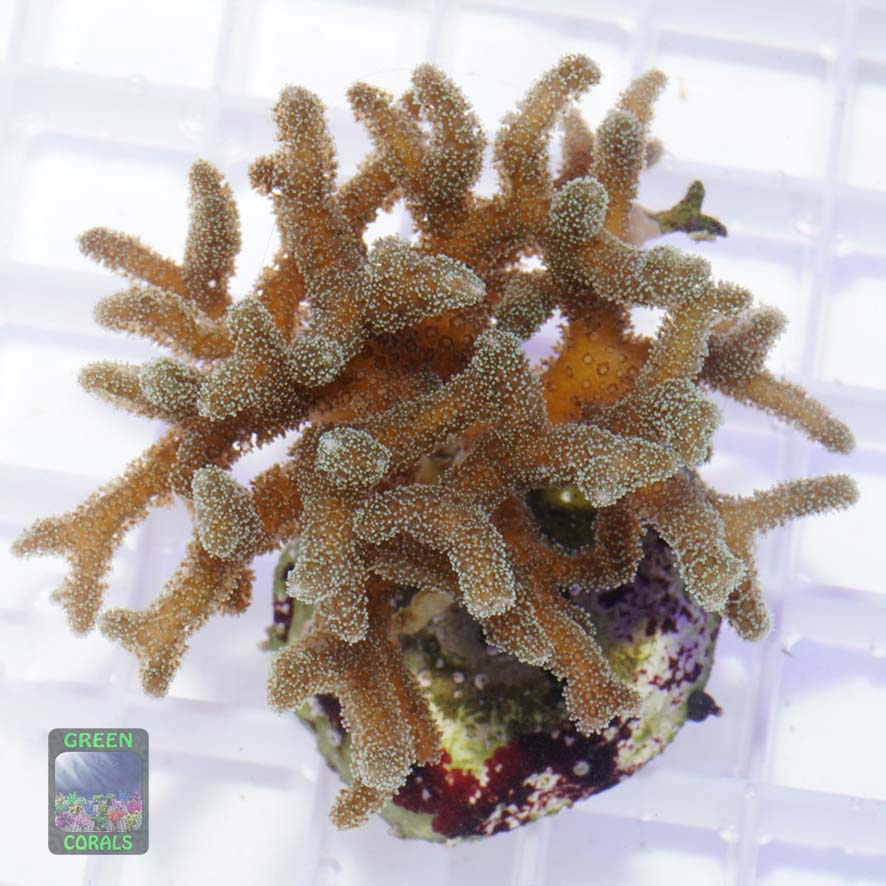
Pocillopora
The genus Pocillopora currently comprises 20 described species, often very similar, and at least P. damicornis is a “species complex” with clear differences within the huge distribution area, which stretches from the Red Sea and South Africa to the American Pacific coast in the west. There are also large differences within a species depending on environmental conditions (light, currents, sedimentation…).
The genus is characterised by more or less pronounced “verrucae”, wart-like thickenings of the skeleton, and the small polyps, about 1 mm in size, are evenly distributed on and between these verrucae. Pocillopora plays an important ecological role as a pioneer species that can recolonise the cleared reef substrate most quickly after disturbances such as storms. As an “opportunist” it occurs in all sub-habitats of the reef, including seagrass meadows and harbours.
Pocillopora damicornis `pink´
The raspberry coral is robust and fast growing.
It is one of the few corals that reproduce in the aquarium by polyp ejection, a form of asexual reproduction. The mother colony, which must have reached a certain size, produces fully developed small polyps which settle elsewhere in the aquarium (apparently with a preference for TUNZE pumps) and gradually grow into a new colony. These new colonies are genetically identical to the mother colony, i.e. they are clones.
ab 24,50 € in unserem SHOP
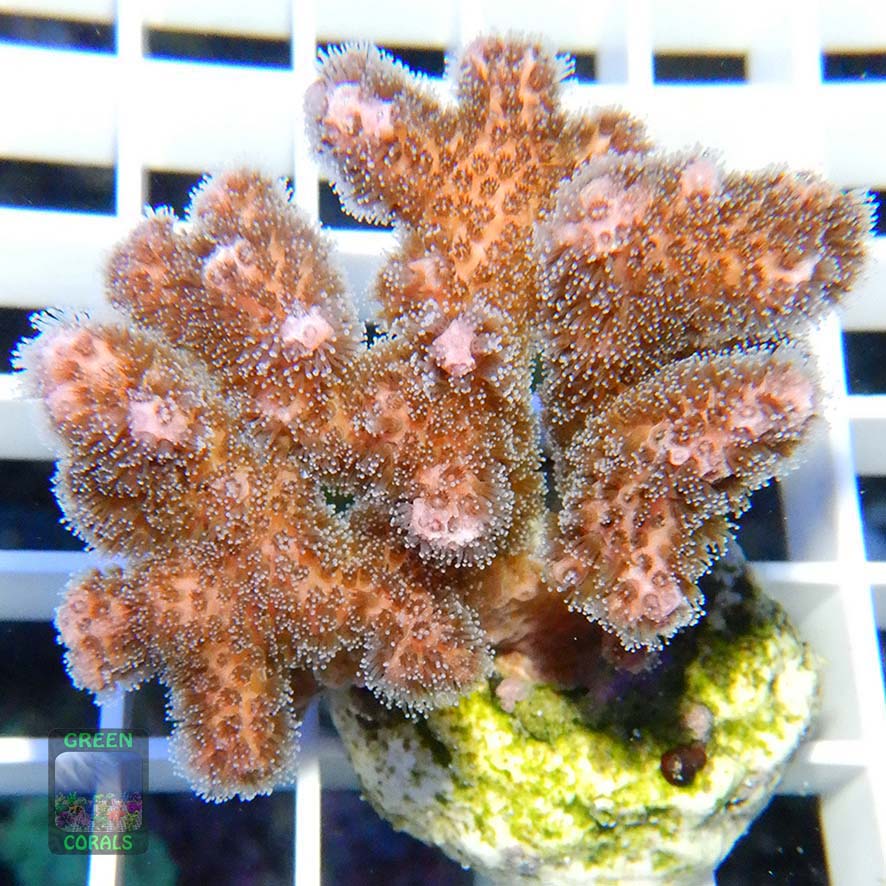
Pocillopora damicornis `grün´
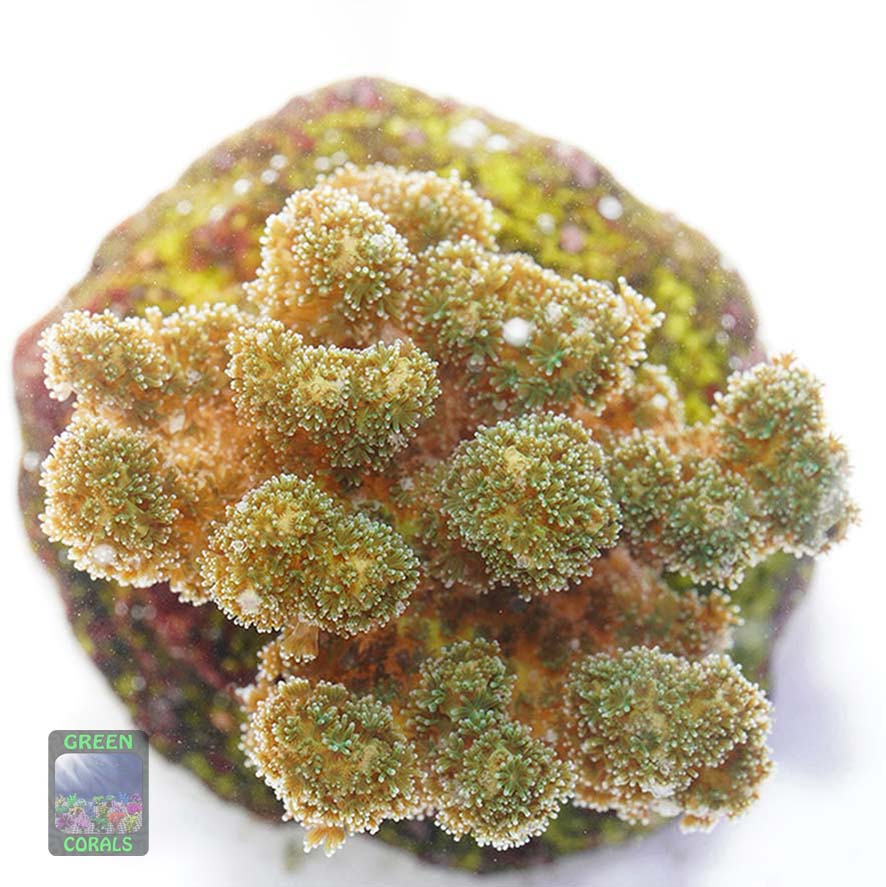
Our green Pocillopora is possibly a green color form of P. damicornis. It is also robust and fast growing and likes bright locations.
